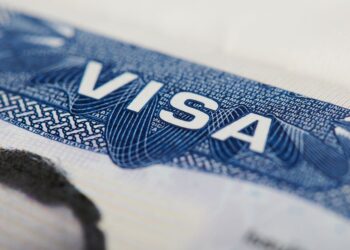Frankly, there are many sources to draw from, when highlighting the issue of labor shortage in the U.S. The shortage of skilled labor cuts a wide swath. Here are some of the top industries currently experiencing acute worker shortages in the U.S.
Healthcare: With a rapidly aging population, there is a sharp increase in demand for healthcare services. This has led to a growing shortage of healthcare workers, including nurses, physicians, and other healthcare professionals.
Technology: The technology industry is experiencing a shortage of skilled workers. There is an acute need for skilled workers in areas such as artificial intelligence, cybersecurity, and software development, in order to keep pace with a rapidly evolving sector.
Manufacturing: The manufacturing industry is facing a shortage of skilled workers, particularly in areas such as machining and welding.
Construction: The construction industry is facing a shortage of skilled workers, particularly in areas such as carpentry, electrical work, and plumbing.
Agriculture: The agriculture industry is facing a shortage of workers for various jobs, including farm workers, truck drivers, and meat processors.
Education: The education industry is facing a shortage of teachers, particularly in subjects such as mathematics, science, and special education.
Transportation and logistics: The transportation and logistics industry is facing a shortage of truck drivers, as the demand for goods continues to grow.
Nonimmigrant Visas
L-1A, L-1B and H-1B visas are all nonimmigrant visa categories designed to allow U.S. employers to bring foreign workers to the United States for a temporary period. Each of these visas has its own specific requirements and conditions, but they can help solve worker shortages.
L-1A Visa
This visa is for executives and managers who are being transferred to a U.S. subsidiary, affiliate, or parent company of the same multinational organization. Examples of L-1A visa jobs include:
Senior executives: Chief Executive Officers (CEOs), Chief Financial Officers (CFOs), and other senior executives who are responsible for managing the overall operations of the company.
Corporate managers: Division managers, department managers, and other corporate managers who are responsible for managing a specific aspect of the company’s operations.
Business development: Executives responsible for expanding the company’s operations into new markets or developing new products or services.
Human resources: Executives responsible for managing the company’s human resources and personnel functions.
Marketing: Executives responsible for managing the company’s marketing and advertising efforts.
L-1B Visa
This visa is for workers with specialized knowledge who are being transferred to a U.S. subsidiary, affiliate, or parent company of the same multinational organization. Examples of L-1B specialized knowledge jobs include:
Information Technology: Software engineers, network architects, and computer systems analysts with specialized knowledge of a company’s proprietary technology.
Marketing: Marketing specialists with specialized knowledge of a company’s marketing strategies and techniques.
Research and Development: Scientists and engineers with specialized knowledge of a company’s research and development processes.
Financial Services: Financial analysts and accountants with specialized knowledge of a company’s financial systems and procedures.
Manufacturing: Production managers and engineers with specialized knowledge of a company’s manufacturing processes and techniques.
Design: Industrial designers and architects with specialized knowledge of a company’s design processes and techniques.
H-1B Visa
This visa is for workers in specialty occupations that require a bachelor’s degree or higher or for workers who will perform services of exceptional merit and ability. The H-1B visa program allows U.S. companies to bring in foreign workers with the necessary skills and education to help address workforce shortages in certain industries for example:
Information Technology: Software engineers, computer systems analysts, database administrators, and network architects.
Healthcare: Physicians, nurses, physical therapists, and other medical professionals.
Science and Engineering: Biomedical engineers, chemical engineers, and scientists in various fields such as physics, chemistry, and biology.
Finance: Investment bankers, financial analysts, and accountants.
Architecture and Design: Architects, interior designers, and industrial designers.
Education: College professors and language teachers.
Business: Management consultants, marketing specialists, and human resources professionals.
These listed visa categories can provide U.S. employers access to a larger pool of highly skilled workers, which can help address workforce shortages and improve the competitiveness of U.S. businesses even though they are subject to annual quotas and other restrictions.










